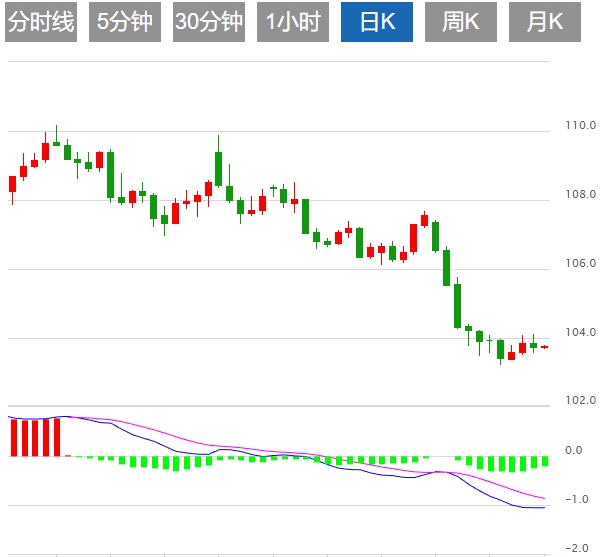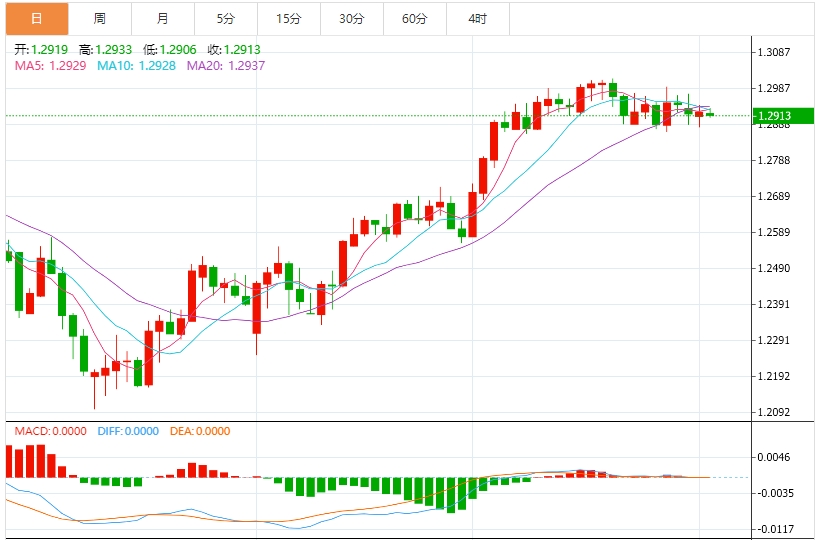In the Asian session on Wednesday, the US dollar index hovered around 104, and the market generally took a wait-and-see attitude, waiting for the new tariff policy that the Trump administration is about to announce. Trump plans to impose a 20% tariff on almost all imported products, which is expected to have a profound impact on the global trade system. The market is worried that this move may increase the risk of stagflation in the US economy, leading to tense market sentiment.
US dollar: As of press time, the US dollar index hovered around 104.25. Trump's tariff policy may push up domestic prices in the United States in the short term, exacerbating inflationary pressures, but it may also suppress market demand and affect economic growth. The US dollar may be supported in the short term by risk aversion, but if the risk of stagflation increases, the Federal Reserve may be forced to reconsider its monetary policy path.

Euro: As of press time, EUR/USD is hovering around 1.0788. If EUR/USD can effectively break through the 1.0830 resistance level, it may continue to rise to the 1.0850-1.0880 area. The gradual cooling of inflation data in the euro zone suggests that the European Central Bank may have more room to cut interest rates, but the pace of rate cuts is expected to be cautious. In the medium term, the market is concerned about the changes in the interest rate differential between Europe and the United States, especially the possible divergence of the monetary policy cycles of the European Central Bank and the Federal Reserve. The daily chart shows that the euro has rebounded from the low of 1.0177 against the US dollar and encountered resistance near the 0.618 Fibonacci retracement level of 1.0820. The exchange rate is currently supported by the middle track of the Bollinger Bands and remains in an upward trend. The MACD indicator DIFF value is 0.0061, the DEA value is 0.0081, and the MACD value is -0.0041, indicating that the daily upward momentum has weakened. The RSI index is at 56.3894, still in the neutral to bullish zone. The key support is at the 0.5 Fibonacci retracement level of 1.0697.

GBP: As of press time, GBP/USD hovered around 1.2915. The release schedule of the UK economic data dossier this week is still light, but new US non-farm payrolls (NFP) labor data will be released later this week. As the US economy enters a post-tariff economic environment, the release of this non-farm payrolls data may become an important data point for the market, and the labor data in March will become a "barometer" of the impact of the Trump team's tariff plan. Technically, GBP traders remain reluctant to push bids higher, while USD inflows also dominate much of the market landscape. However, cable short pressure also remains limited. The bullish trendline from the deep swing low of January at 2100.200 price level remains intact, and momentum remains in favor of bidders as price action fluctuates above the 1-day exponential moving average (EMA) at highs of 2725.<>.

Although the Indian rupee outperformed other regional currencies last month and posted its biggest monthly gain in 6 years, it may face obstacles this week. The White House is set to announce reciprocal tariffs on April 2. The rupee has benefited from recent dollar weakness and the two-way volatility allowed by the Reserve Bank of India, but "the main risk to India's external trade remains from uncertainty over U.S. trade/tariff policy," Kotak Institutional Equities said in a report. "We expect the dollar to trade between 85-89 Indian rupee in fiscal 2026. These forecasts will be reviewed once tariffs are announced," the report said. Traders will also keep a close eye on how the Reserve Bank of India responds to the foreign exchange market. A trader at a bank in Mumbai said the Reserve Bank of India "may allow (the dollar to trade against the Indian rupee) to rise sharply, as it has already retreated quite a bit in March," in case of negative surprises.
New Zealand sells a lot of agricultural products to the world economy and relies heavily on open markets, so it may be a perfect yardstick for measuring how quickly the impact of a global trade war spreads through the world economy, said Satish Ranchhod, senior economist at Westpac Bank in New Zealand. The United States is New Zealand's second largest trading partner and a major market for New Zealand's dairy, beef and wine exports. But tariff disruptions are not just a trade issue with the United States. They may also lead to trade disruptions in some of New Zealand's other major trading partner economies, thereby affecting demand for New Zealand's export products. In addition, if other countries that produce similar products to New Zealand are also subject to US tariffs, their exports may eventually shift to New Zealand's competitive market.
In view of the rising risk of a recession in the United States, Pacific Investment Management Company (PIMCO) is optimistic about the stable return rate of the global bond market in its latest outlook. The company warned that Trump's aggressive trade, spending cuts and immigration policies are bound to cause the US economy to slow faster than previously expected, thereby damaging the labor market. Investors are advised to move their portfolios to safer assets. They tend to diversify their allocations in the global bond market, focusing on increasing interest rate exposure to the UK and Australia. Due to fiscal pressure, Europe's long-term interest rate exposure is "less attractive", and the bond yield curve in the eurozone market is expected to become steeper.
Richmond Fed President Barkin said Trump's tariffs could push up inflation and unemployment, posing a huge challenge to the Fed. The price shocks from tariffs could trigger a "cage showdown" between frustrated consumers and providers of goods and services who "really think" they have to pass on costs. Obviously, part of the impact of tariffs will be transmitted to prices, triggering inflation. Barkin also warned that the job market will also feel some of the impact. Higher prices may reduce demand and reduce sales. If companies do not raise prices, profit margins will fall; if companies want to start improving operational efficiency, this means adding staff.
The number of job vacancies in the United States decreased in February, while layoffs remained sluggish, further proving that the labor market is only gradually cooling down. The decrease in job vacancies was due to a decline in retail trade, financial activities, and accommodation and food services. After steadily declining from a peak in 2022, job openings have largely stabilized near pre-pandemic levels. However, uncertainty surrounding Trump's policies is putting business investment plans on hold, which is also likely to dampen the job market and overall economic growth. In addition, consumers have been more pessimistic about their job prospects and financial situation in recent confidence surveys, and companies including Walmart and American Airlines Group have warned of weaker demand in the future. To some extent, this means a significant reduction in spending, and companies' hiring plans may also be hit.
Goldman Sachs Group expects the yen to climb to the bottom of the 140 range against the dollar this year as uneasiness about U.S. economic growth and trade tariffs boost demand for the safest assets. Kamakshya Trivedi, head of global foreign exchange, interest rates and emerging market strategy at Goldman Sachs, said the yen would provide investors with the best currency hedging tool if the likelihood of a U.S. recession increases. Reaching the 140 level would mean a 7% rise from current levels, and the bank's forecast is more optimistic than the median of 145 in the agency's survey of analysts. Trivedi said, "The yen tends to perform best when U.S. real interest rates and U.S. stocks fall at the same time."
Barclays economists said in a report that while no country in Asia appeared to manipulate exchange rates last year, this may not prevent the United States from targeting Asia with its foreign exchange policy. Barclays' calculations of changes in foreign exchange reserves show that dollar weakness in February led to dollar buying in Asia, which may continue until March. The longer the dollar is under pressure, the more Asian central banks will be inclined to intervene when trade pressures intensify to prevent their currencies from strengthening. The bank added: "In our view, there is a possibility that the U.S. government will use exchange rate manipulation to justify various actions, including tariffs."